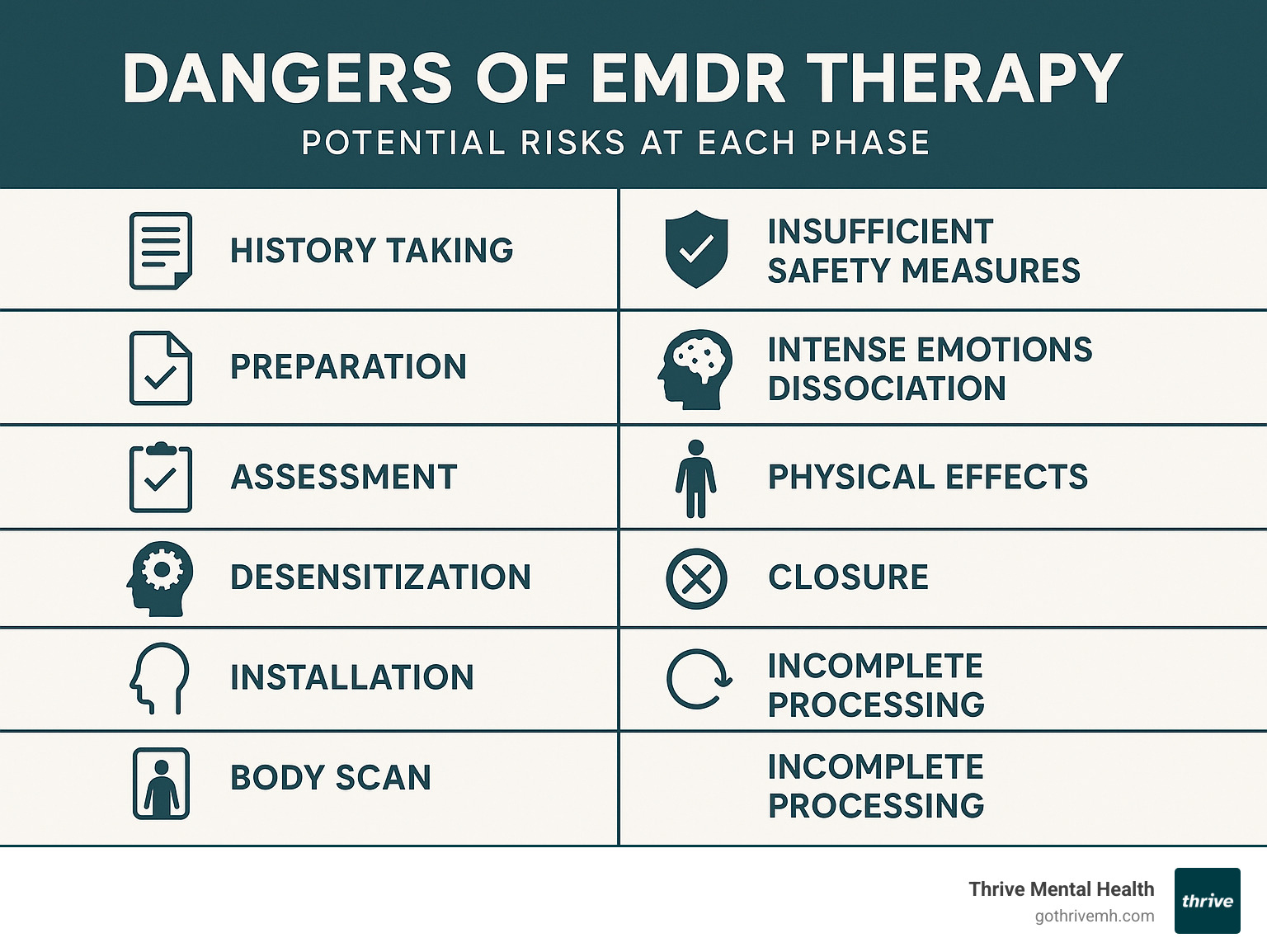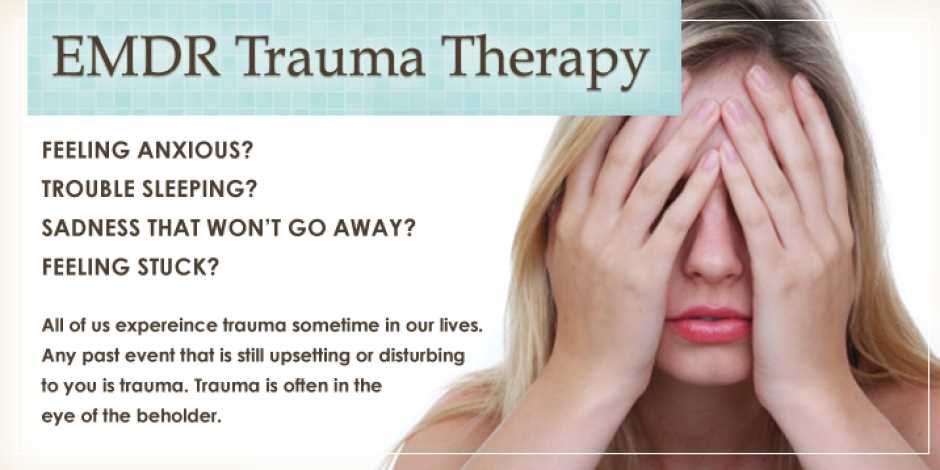Licensed emdr therapists nyc specialize in holistic approaches to recovery
How EMDR Treatment Works: an In-depth Consider the Process and Its Efficiency
EMDR treatment has emerged as a famous treatment for trauma-related disorders. Its organized strategy consists of various stages developed to facilitate the handling of stressful memories. Central to this approach is the concept of reciprocal excitement, which plays a vital duty in how memories are refined. Recognizing these components discloses much about the therapy's effectiveness. However, what particularly takes place during an EMDR session, and how does it impact the healing journey?
Understanding the Concepts of EMDR Therapy
EMDR therapy, or Eye Motion Desensitization and Reprocessing, operates on the facility that unsolved stressful experiences can prevent psychological wellness. This ingenious therapeutic approach intends to help with the processing of traumatic memories, permitting individuals to acquire a much healthier viewpoint on their past. Central to EMDR is the principle of reciprocal excitement, typically achieved through led eye activities, which is thought to help integrate distressing memories into a much more adaptive framework.

The 8 Phases of EMDR Treatment
The procedure of EMDR treatment unfolds over 8 distinct phases, each developed to guide clients via an organized strategy to healing injury. The initial phase includes history-taking, where the specialist examines the client's background and determines target memories. In the second stage, clients learn relaxation methods to take care of distress. The 3rd stage focuses on determining adverse beliefs associated with the traumatic memory.
The 4th stage is where the desensitization procedure starts, enabling clients to refine the terrible memory. The fifth phase involves mounting favorable beliefs to replace the unfavorable ones. In the sixth phase, customers are guided to assess their physical and psychological actions to the processed memory. The 7th stage highlights closure, assisting clients return to a state of equilibrium. Finally, the 8th phase involves reevaluation, where therapists and customers evaluate progression and address any residual distress. This extensive method cultivates a path to healing and strength.
The Role of Bilateral Stimulation
Reciprocal stimulation is a crucial element of EMDR therapy, facilitating the processing of traumatic memories. This method entails alternating stimulation of both hemispheres of the mind, typically attained via eye activities, auditory tones, or responsive feelings. The function of bilateral excitement is to involve the mind's all-natural information processing system, which may end up being disrupted complying with find here injury.
By triggering both sides of the mind, reciprocal excitement helps clients gain access to and reprocess upsetting memories in a much more flexible way. This strategy encourages the combination of distressing experiences, lowering their emotional fee and enabling customers to establish new point of views.

In addition, reciprocal excitement may advertise leisure and More Help lower anxiousness throughout sessions, producing a more secure atmosphere for customers to confront painful memories. Inevitably, this approach enhances the healing process, enabling individuals to approach recovery and resolution.
Proof Sustaining the Effectiveness of EMDR
Research study has revealed that EMDR therapy works in dealing with numerous emotional conditions, specifically post-traumatic tension disorder (PTSD) Various studies have actually shown considerable reductions in PTSD signs following EMDR treatment. A meta-analysis of randomized controlled trials discovered that EMDR was as efficient as cognitive behavioral therapy (CBT) for PTSD, with lasting impacts observed also months after treatment. Additionally, the American Psychological Organization and the Globe Health Organization support EMDR as a recommended treatment for trauma-related disorders.
Beyond PTSD, research study indicates that EMDR can likewise profit individuals enduring from anxiety, anxiety, and anxieties. An expanding body of proof supports its use in varied populaces, including professionals and youngsters - best emdr therapy in nyc. On the whole, the accumulating study emphasizes EMDR's potential as a functional therapeutic option, leading the way for additional exploration into its mechanisms and applications in psychological wellness treatment
What to Expect During an EMDR Session
During an EMDR session, clients can expect an organized yet adaptable technique targeted at handling distressing memories. The therapist starts by developing a safe setting, where clients can feel comfy sharing their experiences. Initial discussions concentrate on recognizing specific memories and connected unfavorable beliefs.
Customers are directed to concentrate on these memories while all at once involving in reciprocal stimulation, commonly with assisted eye motions or tapping. This double emphasis intends to promote the processing of the trauma, permitting customers to find more information reframe their experiences and reduce psychological distress.
Throughout the session, specialists check customers' reactions, readjusting the pace and strategy as required. Procedure might include leisure techniques or cognitive restructuring to enhance positive beliefs. In general, customers can anticipate a supportive environment that motivates self-exploration and healing, ultimately bring about a greater sense of psychological well-being.
Often Asked Questions
Is EMDR Treatment Ideal for Children or Adolescents?
EMDR therapy can be ideal for children and adolescents, provided it is adapted to their developing needs (emdr therapy). Medical professionals usually change strategies to assure safety and efficiency, sustaining younger populaces in processing injury and psychological distress
How Much Time Does EMDR Treatment Generally Last?
EMDR therapy generally lasts in between 8 to 12 sessions, with each session ranging from 60 to 90 mins. Specific requirements and the intricacy of injury can affect the total duration of therapy.
Can EMDR Therapy Be Done Remotely or Online?
EMDR therapy can certainly be performed remotely or online. Numerous professionals have adjusted their approaches to virtual settings, permitting customers to take part in reliable sessions from the comfort of their homes, maintaining healing benefits.
What Are the Possible Negative Effects of EMDR?
Potential negative effects of EMDR treatment may consist of momentary emotional distress, enhanced stress and anxiety, vivid memories, and physical pain. Individuals might additionally experience exhaustion or headaches complying with sessions, as the mind refines intense feelings and memories.
How Does EMDR Compare to Conventional Talk Treatment?

EMDR treatment, or Eye Motion Desensitization and Reprocessing, runs on the premise that unresolved stressful experiences can prevent psychological well-being. The procedure of EMDR treatment unfolds over 8 distinct stages, each designed to assist clients through a structured method to healing injury. Reciprocal stimulation is a vital part of EMDR treatment, helping with the handling of distressing memories. During an EMDR session, customers can expect an organized yet adaptable method aimed at processing traumatic memories. Prospective side effects of EMDR therapy may consist of momentary emotional distress, increased anxiousness, vibrant memories, and physical discomfort.